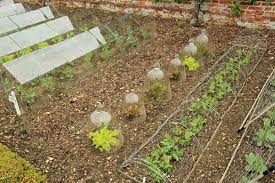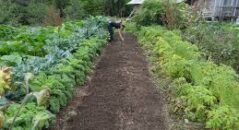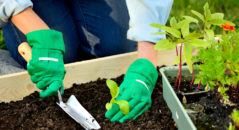Organic gardening is rapidly gaining popularity in contemporary society. It involves the application of natural processes and materials to grow crops and plants. It also involves avoiding synthetic fertilizers, pesticides, herbicides, genetically modified organisms, and other chemicals that are harmful to plants, soils, animals, and human beings. Organic gardening has numerous benefits, including healthy foods, a safe environment, biodiversity promotion, and ecological harmony.
Here are the key elements of organic gardening:
- Soil: Soil is the most important element in organic gardening. Organic gardeners emphasize the use of healthy soil to grow productive plants. Healthy soil has a balanced pH, good drainage, and adequate organic matter. Organic gardeners use compost, manure, cover crops, and other natural sources to fertilize the soil. They also employ techniques that improve soil health, such as crop rotation, mulching, and companion planting.
- Plants: Organic gardening involves the use of diverse plants that promote ecological balance. Organic gardeners grow a variety of fruits, vegetables, herbs, and flowers that support pollinators, beneficial insects, and other organisms. Organic gardeners also choose disease-resistant and climate-appropriate plants. They use natural methods to control pests and diseases such as crop rotation, intercropping, and biological controls.
- Water: Water is a precious resource that organic gardeners use wisely. They employ techniques that conserve water, such as drip irrigation, rainwater harvesting, and water-efficient plants. They also use water responsibly by avoiding over-watering, which can lead to plant diseases and waterlogging.
- Compost: Composting is an important element of organic gardening. Organic gardeners make compost by mixing organic matter such as food scraps, leaves, and grass clippings. Composting enriches the soil and reduces waste. Organic gardeners also use compost tea, which is a liquid fertilizer made by steeping compost in water. Compost tea provides nutrients to plants and protects them from diseases.
- Biodiversity: Organic gardening promotes biodiversity. Organic gardeners use techniques that encourage the growth of beneficial insects and other organisms. They also avoid using pesticides that harm beneficial insects. Organic gardening also involves planting a variety of crops, which supports biodiversity and ecological balance.
- Tools: Organic gardeners use tools that are simple, efficient, and eco-friendly. They use hand tools such as shovels, hoes, and rakes to minimize soil disruption. They also use tools that reduce waste, such as reusable bags and buckets. Organic gardeners also maintain their tools to ensure longevity and avoid unnecessary waste.
- Education: Organic gardening involves ongoing learning and education. Organic gardeners learn about soil health, plant care, water conservation, pest control, and other topics that promote successful gardening. They also learn from others through community gardening projects, workshops, and online resources.

In conclusion, organic gardening is a holistic approach to growing plants that promote ecological balance, healthy foods, and a safe environment. It requires the use of healthy soil, diverse plants, water conservation, composting, biodiversity, eco-friendly tools, and ongoing education. Organic gardening is not only environmentally friendly but also offers numerous benefits to our health, communities, and economies. With commitment and dedication, anyone can practice organic gardening and contribute to a better world.




